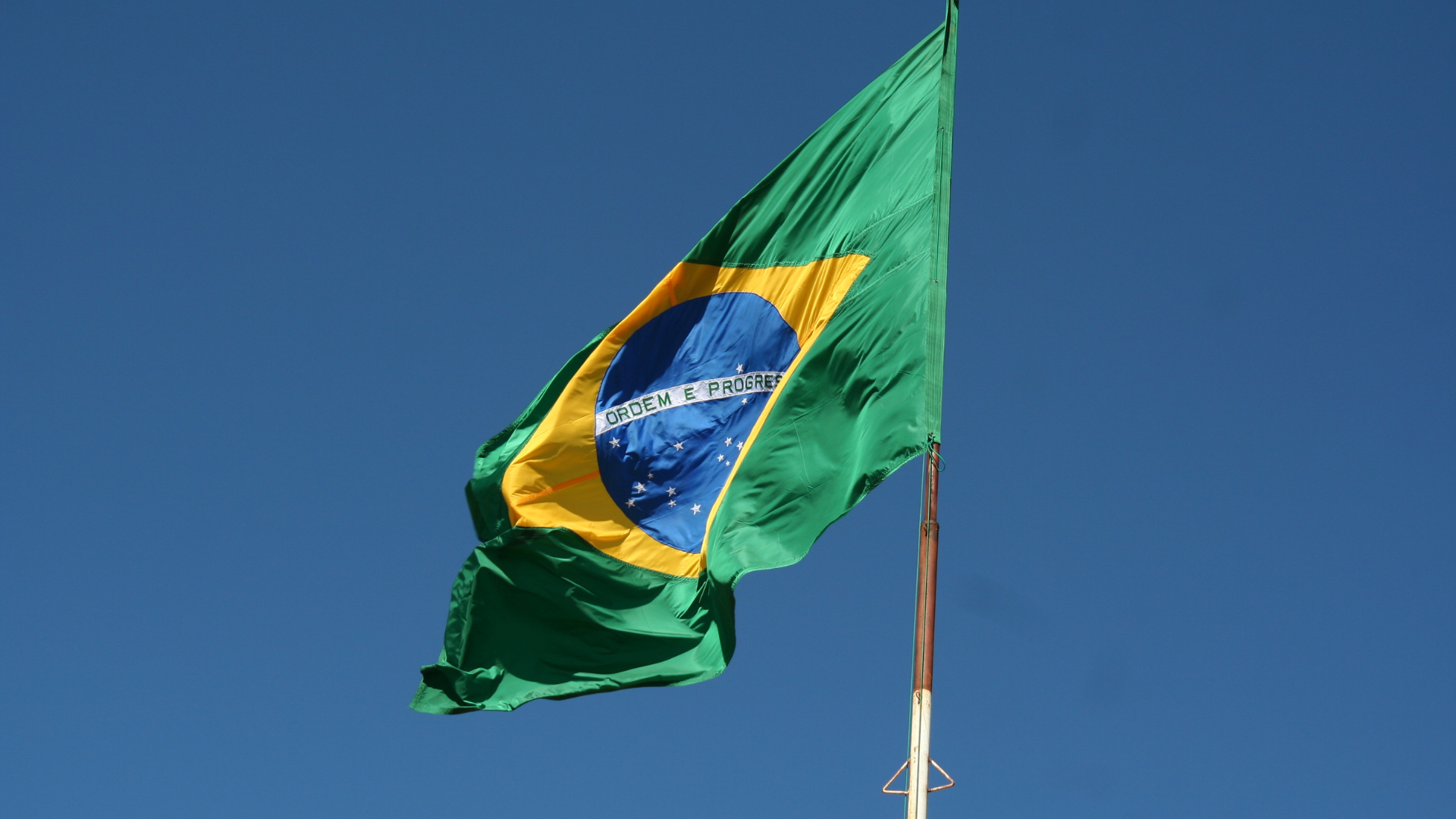Pax Americana
Dear investors,
On January 20, Trump was sworn in for his second term as President of the United States, initiating a management shock that is shaking the world. The attention is well-warranted. American gross domestic product (GDP) represents ~25% of global GDP, the United States is the world's largest importer (U.S. $3 trillion), the second-largest exporter (U.S. $2 trillion), and 58% of its foreign exchange reserves are held in dollars. Beyond its economic significance, it is the political leader of the West and the greatest military power on the planet, responsible for ~38% of global defense spending.
Trump signed more than 70 executive orders in his first 45 days in office. Analyzing the impact of this set of actions is quite complex, both due to their scope and because many orders may remain in effect only temporarily. The best we can do is seek to understand the philosophy behind these actions, imagine what scenarios this philosophy will likely lead us to, and investigate what risks may arise for our investments.
Historical context
The global geopolitics we are accustomed to was shaped after World War II, when the ideological struggle between capitalist countries and revolutionary communist countries emerged. The Soviet Union became a military superpower and aimed to convert the entire world to its political model, either militarily or by supporting communist revolutions in vulnerable countries. To counter this plan, the West created a large bloc of allied countries that would cooperate economically and militarily to defend the "free world."
In the economic sphere, the costs of war had forced most countries to abandon the convertibility of their currencies into gold, which disrupted finance and international trade. The solution was the Bretton Woods Agreement, signed in 1944, which created a new international monetary system in which the US dollar would be the reference currency and would maintain its convertibility into gold. Other currencies would have a fixed exchange rate against the dollar, adjustable only in cases of imbalance. The Agreement also created the IMF and the World Bank, with the mission of supporting post-war reconstruction and the development of the poorest countries.
In 1945, the UN (United Nations) was created with the aim of promoting international peace and security, fostering cooperation for economic, social, and humanitarian development, and defending human rights and fundamental freedoms. Originally, 51 countries were members. Today, the UN has 193 members and continues to serve as a major multilateral forum for discussion and coordination of efforts that transcend national borders.
In the military sphere, the main concern was to prevent the Soviet Union from advancing into Europe, weakened by wars and divided among several countries much smaller than the Soviet Union. The defense strategy was the creation of NATO (North Atlantic Treaty Organization) in 1949, a military treaty under which allied countries would collaborate to protect any member country that was attacked. Despite differences in military power among member countries, NATO adopted the principle that each country's sovereignty would be respected and major decisions would be made by consensus, so that no country would be forced to act against its will.
All of these agreements were negotiated under strong American influence, as Europe was in debt from the costs of the war, faced with the arduous task of rebuilding its infrastructure, and unable to invest heavily in defense and development. The United States, much less affected by World War II and already the world's largest economy, assumed the bulk of the burden of protecting and developing the West. With its navy, it began to guarantee the security of sea lanes around the world to enable the growth of international trade (before World War II, cargo ships were at risk of attack by pirates or the navies of rival countries) and engaged in wars far from home, such as the Korean and Vietnam Wars, to prevent the advance of the communist bloc. The counterpart for all these initiatives, at the expense of the United States and beneficial to all allied countries, was to maintain the dollar as the global reserve currency, turning several countries into creditors of the American government.
This configuration remains in place to this day. The United States still bears the majority of NATO's military budget, accounting for ~70% of defense spending, even though it represents ~50% of the member countries' total GDP. The dollar remains the primary international reserve currency, and international relations between Western countries still follow the tradition of making important decisions multilaterally.
Where does “America first” come from?
The core principle of Trump's policy changes is "America First." Trump claims the United States is unnecessarily disadvantaged in several international agreements, subsidizing other countries in trade relations, bearing disproportionately high defense spending, and sponsoring numerous projects around the world without any compensation for Americans.
Any high-impact political act tends to have deeper roots than it appears in press conferences. Huge teams of politicians and experts discuss the best course of action, from their perspective, before the conclusions of this internal process reach the public through the political leader who acts as the group's spokesperson. Knowing this, what analysis could result in the "America First" principle? One possibility is the interpretation that the geopolitical order designed after World War II is no longer suitable for the current situation.
During the Cold War, the big question was which economic and social model would prevail in the world. If the United States failed to aid Europe and underdeveloped countries, it would be vulnerable to the influence of the Soviet Union's communist revolution. If communism spread throughout the world, the communist bloc would eventually become militarily superior to America and dominate it. Under this threat, sustaining the West's military defense and offering aid to underdeveloped countries was not an act of American altruism; it was a strategy of self-preservation. Today, the scenario is quite different.
After the fall of the Soviet Union, there is no longer any debate over which economic model is superior. Russia itself opened its economy and adopted market dynamics similar to those of Western capitalism. The popular appeal that the communist promise of prosperity for all once held is no longer there. The main difference today is in the political model: while the West remains predominantly democratic, Russia and China, the new Eastern superpower, are governed by authoritarian regimes inherited from the revolution under the communist promise.
The authoritarian government model has a much lower potential for spreading through popular support, and military expansion is currently unlikely in highly strategic territories due to the existence of nuclear arsenals, which have created the dynamic of Mutually Assured Destruction: if a nuclear power attacks another nuclear power with atomic bombs or with excessive aggression, the act would trigger a nuclear war that would lead to the annihilation of both sides. The possibility of this catastrophic outcome acts as a deterrent to major conflicts between superpowers.
Today, the Western way of life seems far less threatened by Eastern powers. This interpretation, coupled with the fact that the United States currently has $36 trillion in public debt, may have led Republicans to question the sense in maintaining the policies of military protection and subsidies offered to other countries since the Cold War.
Main actions of the Trump administration in the economy
The United States currently faces a fiscal problem. In 2024, the US fiscal deficit was US$1.8 trillion, equivalent to 6.41 trillion of GDP, and the US debt of US$1.4 trillion is equivalent to 124 trillion of GDP (by comparison, Brazil had a fiscal deficit of 8.41 trillion in 2024 and ended the year with a debt of 76 trillion of GDP). The US fiscal situation has been rapidly deteriorating since the subprime crisis in 2008. Prior to that, at the end of 2007, US debt was 63 trillion of GDP, almost half the current level. This has led to discussions about the sustainability of the dollar as a global reserve currency.
The Trump administration's response was a plan to reduce public spending, through the Department of Government Efficiency (DOGE – for those interested, we recorded a discussion on the topic, available at this link) and the prioritization of American economic development, with deregulation projects and the abandonment of environmental agendas. An illustrative example is the return of incentives for fossil fuel exploration to lower the cost of American energy, promoted by Trump under the mantra "drill, baby, drill."
In international trade, the United States announced that it will increase import tariffs on several countries, based on two principles. The first is reciprocity, with American import tariffs being equal to the tariffs that other countries charge on imports of American products. The second is the use of tariffs as a tool for pressure in specific situations, such as countries that refused to take back illegal immigrants deported from the United States.
The issue of tariffs is quite delicate. While several countries denounce this measure as protectionist, almost all adopt similar measures. In cases where the tariff increase is based on reciprocity, we understand that arguing why the imbalance should continue is difficult. There are three possible scenarios for each bilateral relationship.
The first is for the affected country to simply accept the new tax and adapt its trade relations with the United States to the new reality. In this case, American inflation would increase along with federal government tax revenue. In Trump's proposal, this increased revenue would be used to reduce public debt and, subsequently, to reduce the American tax burden. Ultimately, the result could be a shift in the source of tax revenue to tariffs and greater protectionism for American industry.
The second is for the affected country to negotiate with the United States a reduction in its own import duties to prevent its exports from being affected by the increase in US tariffs. This would tend to increase US exports to that trading partner and thus stimulate domestic industry. US revenue would increase due to the increased export volume, but the impact would likely be more limited.
The third scenario is that the United States and the affected country enter a trade war and escalate tariffs to a level higher than those currently practiced by both countries. This would lead to a reduction in bilateral trade flows and would likely harm both countries.
The final outcome of Trump's tariff policy is impossible to predict because it depends on each country's response. We believe the first two scenarios are more likely than the third, as trade wars, while damaging to both sides, tend to be temporary and end with the negotiation of a more beneficial agreement.
Overall, what we've seen in the Trump administration's recent actions demonstrates a pragmatism well-known in the business world. There's a lot of noise surrounding the announcements, particularly amplified by Trump's style, but it seems to us that the strategy is to scour the main agreements in force for points where some terms could be improved. These efforts are likely to bear fruit, even if less than expected, and the ultimate impact on the American economy will be positive.
Change in geopolitical strategy
For the past 80 years, since the post-war treaties, the United States has led the West through multilateral negotiations and collaboration with allied countries. Now, the Trump administration appears to be breaking with this tradition and pursuing unilateral strategies that prioritize American interests over a shared worldview with allied countries.
The central issue in this sphere is the war between Ukraine and Russia. Since its beginning in 2022, NATO member states have maintained their unwavering support for Ukraine. They stopped short of sending their own fighters, to prevent the conflict from escalating into what could become a Third World War, but they financed the war and sent military equipment that has allowed Ukraine to resist Russia to this day. The main reason for this support is to prevent a precedent for territorial expansion into Europe through military action, which could lead Russia to advance into additional territories in the future.
Trump comes with a different interpretation. He understands that the United States is financing a war far from its territory, with no immediate benefits for the Americans, and that the best solution is to negotiate an end to the war, even if the principle of not allowing any territorial expansion by military means is not fully preserved. Ukraine, and European countries in general, accuse the United States of betraying the NATO mutual defense agreement, and the Trump administration retorts that the allies are abusing the disproportionate support from the United States to prolong a war that is not in its economic and humanitarian interests.
The United States is also distancing itself from the European bloc on other issues: it has withdrawn from the WHO (World Health Organization), withdrawn from the Paris Agreement (to combat global warming), and has harshly criticized the immigration policies adopted by Europe in recent decades.
The path the Trump administration appears to be charting should boost the development of the US domestic economy and improve its fiscal balance, but it is also likely to shake political relations with Europe, at least initially. How these relations will evolve is unpredictable. If Europe elects predominantly right-wing governments in its next elections, it may lead to a realignment of European countries with the United States. Otherwise, Europe may become a less aligned bloc for the longer term.
There's also an expansionist tone to Trump's statements. Some actions are merely symbolic, such as renaming the Gulf of Mexico the Gulf of America, but the ideas of incorporating Canada and Greenland and regaining control of the Panama Canal signal practical intentions to expand, if not American territory, at least the area under strong US influence.
The intention may seem strange in modern times, but this expansionist drive is the standard behavior of empires throughout history. Alexander the Great's Macedonian Empire began in Greece and expanded as far northwestern India (only halted due to Alexander's premature death from illness). The Roman Empire began in present-day Italy and came to dominate almost all of Europe and the other territories bordering the Mediterranean Sea. Genghis Khan's Mongol Empire began in Mongolia and came to dominate almost all of Asia. Portugal and Spain launched the great voyages of discovery to expand their territories beyond the Atlantic Ocean. The British Empire, at its peak, had over 70 colonies. Modern-day China and Russia also behave like empires.
The multilateral geopolitics established after World War II and followed by the United States until then constitutes an exception in the longer historical line. It would not be surprising if the United States began to exercise its power and influence more blatantly, as empires of the past did and as other empires do today.
Even if this is the path taken, it's still difficult to predict whether the results will be good or bad for the world. There have been tyrannical empires and virtuous empires. There's also the fact that, in the modern democratic world, everything can change in the next election.
How Brazil could be affected
Our country is a supporting player in global geopolitics. We are not involved in military conflicts. We are not involved in technology races. We are simply a major commodity-exporting country, with a peaceful people who are always busy with their own internal problems. We are certainly not a threat to the United States and should not be high on the list of strategic priorities on the American agenda.
Of Brazil's exports, 12.0% are to the United States, while 28.5% go to China, our main trading partner. Of Brazil's imports, 15.5% come from the United States and 24.6% from China. Furthermore, foreign trade represents only 25-30% of Brazil's GDP, compared to a global average of 50-60%. In other words, the impact of a potential increase in US tariffs would not be catastrophic for Brazil. It is not even clear whether we will be the target of any US protectionist measures, as Brazilian exports to the United States are predominantly mineral and agricultural commodities.
If relations between other countries and the United States deteriorate, the impact on Brazil could be positive. If, for example, the United States and China enter a trade war, a portion of Chinese exports would be redirected from the United States to other trading partners, causing prices offered to the rest of the world to fall, while American inflation would rise. China could also decide to buy products currently supplied by the United States from other countries. For example, China purchases ~US$15 billion worth of soybeans from the United States annually. Part of this demand could then be met by Brazil.
Another effect could be a weakening of the dollar due to a reduction in international dollar reserves held by other countries. Currently, approximately 30% of issued dollars are held in international reserves, so this potential reduction could have a significant impact on exchange rates. Some countries are already increasing their gold reserves, motivated by these geopolitical issues.
There is also a potential indirect impact of the new American policies. If the fiscal austerity being implemented there yields positive results for the United States, the case could become an example for other countries facing the same problem of fiscal deficits and growing debt. Otherwise, it could be another vain hope: perhaps the Brazilian government elected in 2026 will implement its own austerity plan and rebalance public finances.
Investment risks
The most obvious risk lies with companies that depend on exports to the United States, as a potential tariff increase could suddenly affect export volume. If tariffs remain in place long-term, there would be the possibility of shifting production to the United States and avoiding import taxes, but this would likely result in increased production costs, and demand from the United States could be reduced anyway.
If Brazil initiates a trade war with the United States and raises import tariffs in retaliation, companies dependent on American inputs would see their costs increase, potentially losing sales volume due to price increases or having to absorb part of these additional costs, reducing their margins. Trade wars with other countries could also harm Brazilian companies by redirecting products previously destined for the United States to Brazil at lower prices, increasing competition with domestic industries and putting pressure on their margins.
Another point of concern is the possibility of a dollar devaluation, as mentioned above, which could affect dollar-denominated investments and, again, companies exporting to the United States. Note that the dynamics of the dollar's decline in this case would be different from what we typically observe in Brazil. Generally, the weakening or strengthening of the real against other currencies is what causes the dollar's variation for Brazil. In the case of a dollar weakening against other currencies, commodities priced in dollars, for example, would not necessarily become cheaper for Brazil. Their prices could rise in dollars at the same time that the USD/BRL rate would fall, neutralizing the practical effect. In other words, we might not reap significant benefits from this dollar decline, other than the lower cost of imports directly from the United States.
This exchange rate risk should be considered cautiously, as a strengthening U.S. economy and fiscal balance could backfire and boost the dollar's value. In the event of geopolitical turmoil, its impact is likely to be more immediate than that of economic strengthening, so we could see an initial devaluation followed by a recovery.
Despite the comments, our philosophy is not to invest based on projections of complex scenarios. We prefer to avoid the uncertainties associated with this level of complexity and maintain our portfolio based on simpler, more assertive theses. Currently, our invested companies depend primarily on domestic markets and are outside the shockwaves of potential trade wars. We see a low risk of our investments being harmed by the changes introduced by the Trump administration thus far.





